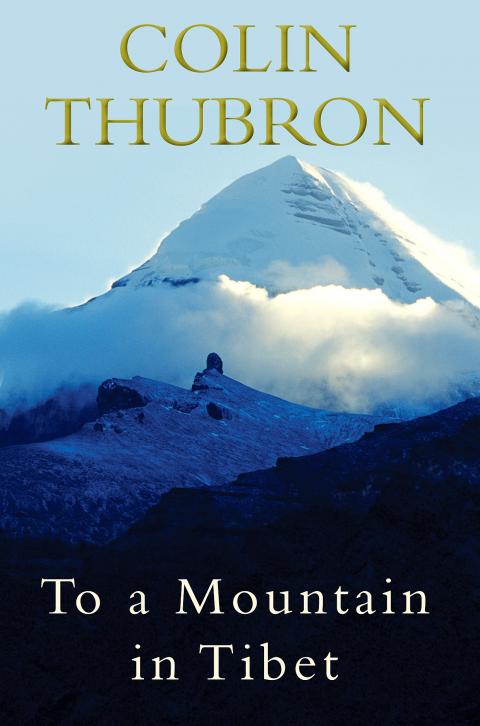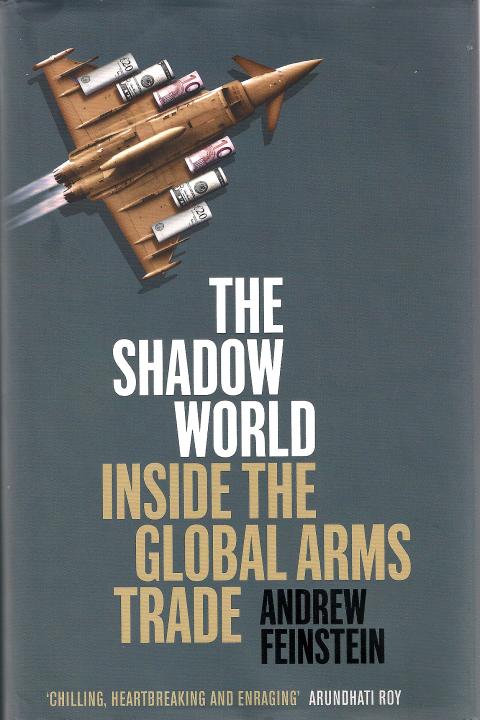Of the books I’ve reviewed this year, the most somber, terrifying and menacing was The Shadow World: Inside the Global Arms Trade by Andrew Feinstein (Hamish Hamilton; reviewed in the Taipei Times Jan. 31). Not only does it give extensive information about private arms dealers — it also considers government involvement. It was reminiscent of the film The Lord of War, at the end of which the credits state that the planet’s biggest exporters of arms are the US, Russia, the UK, France and China — in other words, the five permanent members of the UN Security Council. It makes you think again about the kind of world we’re really living in.
Not necessarily an answer to the horror of the international arms trade, but nonetheless enormously fascinating as history, was the re-issue, finally in its complete form, of Victor Serge’s 1951 classic Memoirs of a Revolutionary (New York Review of Books; reviewed June 5). Serge joined the Bolsheviks for a time while remaining resolutely opposed to all terror tactics, not to mention being a life-long opponent of the death penalty. Later he was sentenced to internal exile, and was lucky to be released after protests from writers in the West, ending his life in Mexico. His wonderful autobiography makes for a substantial and very invigorating read.
Back in the modern world, but a long way from most people’s experience of it, was Colin Thubron’s To a Mountain in Tibet (Vintage; reviewed July 31). It describes his approach to, and circuit of, Mount Kailash, a mountain considered so sacred that no one has apparently ever been to its peak. Thubron is simultaneously skeptical and open to all impressions. The Tibetan way of death is everywhere evident, but Thubron, 73 at the time, soldiers on with one guide and one porter, and no doubt a very good pair of boots.

Taipei Times file photo
From Penguin came the paperback of Norman Davies’s Vanished Kingdoms: The History of Half-Forgotten Europe (reviewed Nov. 27). In it, this distinguished professor revisits 14 European nations that no longer exist, and relates their destinies with considerable gusto. This is a continent, you quickly come to realize, that has been ruled and fought over by diverse dynasties for thousands of years, with men being willing to lay down their lives for “king and country” when the country, let alone the king, proves to be very much a temporary phenomenon. It’s a lesson that should be learned by us all.
Lastly, a book that I haven’t been able to get out of my mind is Taipei-resident Eric Mader’s Heretic Days: Writings from the Margins of Christianity (CreateSpace, reviewed Feb. 28). It’s simultaneously learned, wide-ranging and bizarre, combining considerations of topics as various as Leonard Cohen, William Blake, St Thomas’s Gospel and the necessity of Judas’s betrayal of Jesus. It’s endlessly fascinating, but so far from my usual areas of interest that I can only put its lingering in my consciousness down to the stubborn persistence, in Mader at least, of human independence and resolution.

Taipei Times file photo

That US assistance was a model for Taiwan’s spectacular development success was early recognized by policymakers and analysts. In a report to the US Congress for the fiscal year 1962, former President John F. Kennedy noted Taiwan’s “rapid economic growth,” was “producing a substantial net gain in living.” Kennedy had a stake in Taiwan’s achievements and the US’ official development assistance (ODA) in general: In September 1961, his entreaty to make the 1960s a “decade of development,” and an accompanying proposal for dedicated legislation to this end, had been formalized by congressional passage of the Foreign Assistance Act. Two

Despite the intense sunshine, we were hardly breaking a sweat as we cruised along the flat, dedicated bike lane, well protected from the heat by a canopy of trees. The electric assist on the bikes likely made a difference, too. Far removed from the bustle and noise of the Taichung traffic, we admired the serene rural scenery, making our way over rivers, alongside rice paddies and through pear orchards. Our route for the day covered two bike paths that connect in Fengyuan District (豐原) and are best done together. The Hou-Feng Bike Path (后豐鐵馬道) runs southward from Houli District (后里) while the

March 31 to April 6 On May 13, 1950, National Taiwan University Hospital otolaryngologist Su You-peng (蘇友鵬) was summoned to the director’s office. He thought someone had complained about him practicing the violin at night, but when he entered the room, he knew something was terribly wrong. He saw several burly men who appeared to be government secret agents, and three other resident doctors: internist Hsu Chiang (許強), dermatologist Hu Pao-chen (胡寶珍) and ophthalmologist Hu Hsin-lin (胡鑫麟). They were handcuffed, herded onto two jeeps and taken to the Secrecy Bureau (保密局) for questioning. Su was still in his doctor’s robes at

Mirror mirror on the wall, what’s the fairest Disney live-action remake of them all? Wait, mirror. Hold on a second. Maybe choosing from the likes of Alice in Wonderland (2010), Mulan (2020) and The Lion King (2019) isn’t such a good idea. Mirror, on second thought, what’s on Netflix? Even the most devoted fans would have to acknowledge that these have not been the most illustrious illustrations of Disney magic. At their best (Pete’s Dragon? Cinderella?) they breathe life into old classics that could use a little updating. At their worst, well, blue Will Smith. Given the rapacious rate of remakes in modern